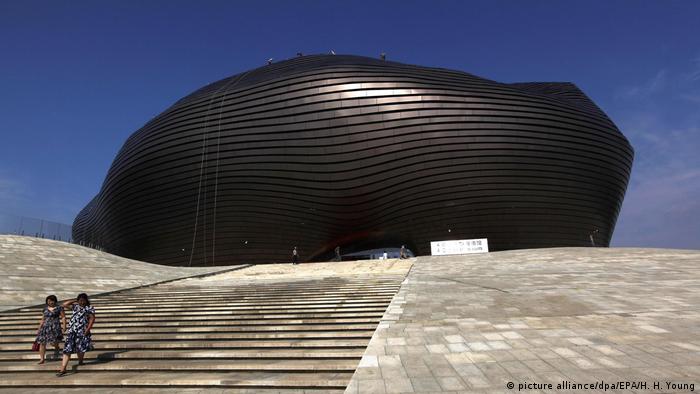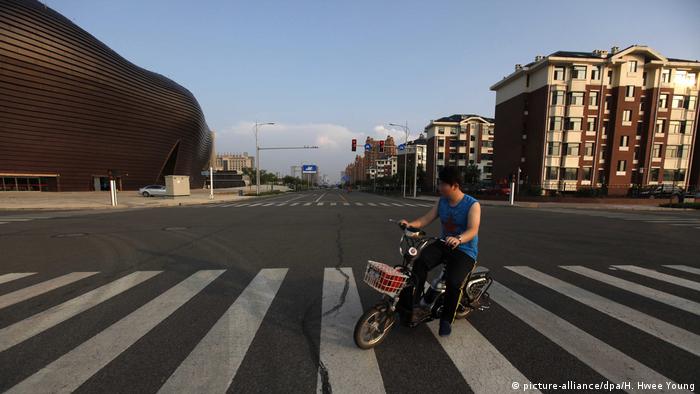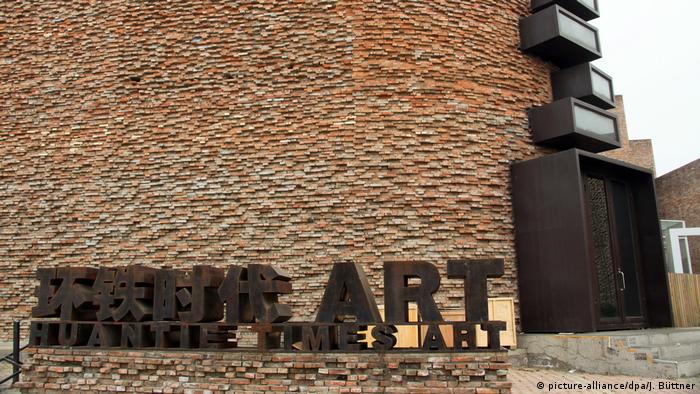The Museum boom in China, with the result that cities want to outdo each other with architecture projects, but the money is missing. Meanwhile, be vacated in the midst of Beijing’s art districts.

Ordos Museum in Inner Mongolia
More and more new museums open in China every year, many of them are considered empty prestige projects, poor investments, and “the spirit of museums”. In the year 1978, there were in China only 349 museums. Their number has drastically risen to 5100. In the last two decades, “boomed” the Museum building in China, almost every day a new Museum opened. In 2012 the 451 new openings has been exceeded. However, there is no end in sight: 2020, the government plans a Museum for every 250,000 inhabitants of China. Many of the museums after their opening ceremony will be empty.

The Kangbashi district in Ordos was built as a place of residence for a million people, today just 30,000 people live here
The Orphaned Temple Of Culture
Leksa Lee is a Professor of “Global Chinese Studies” at New York University in Shanghai, she is an expert on Chinese culture, politics and history. In the last few years she has explored in particular the political and economic Background of the new museums. In the course of their Research, they visited various museums, some of them had to be for your visit to the lights in the rooms turned on. The state, the Lee found it, was frightening. Compared to the DW reported, “leaking roofs, dusty screens, and down dangling cables in some of these “orphaned ” museums”.
Lee, however, is careful with the information that you are about the run-down museums, price, name, don’t want to call them. With your back posture, you want to protect your partners. China’s museums are a touchy subject. They are managed either directly by the state or the municipalities at the local level. While world renowned museums like the Palace Museum in Beijing or the terracotta army Museum in Xian are under the protection of the state, the municipalities, many of the younger institutions.
These museums address the local history and industry, but also Ecology and urban planning.

World known: the Forbidden city in Beijing
The lower levels of administration are often tasked to develop local cultural projects and to encourage museums are a tangible result of this project. Many city governments in China are, however, deep in a debt crisis, they often have to sell property to Finance with the money for the construction of new museums.
Poor management and lack of funds
Jeffrey Johnson, the head of the research laboratory “, China Megacities Lab,” is a connoisseur of strategy, according to the China museums, and said to the business magazine “Forbes” that the city authorities in China vis-à-vis investors of first-class land for new construction projects, but only under the condition that they build in parallel, a cultural centre. Thus, it is possible local politicians that the city-defining buildings, provided that the local government must Finance.
So easily it runs, but not always, tells Leksa Lee DW: “Sometimes a lot of resources are put into the construction of a Museum, and it will put a lot of emphasis on the perfection of the permanent exhibitions, so that no resources are left to manage the Museum after the opening of and manage.”
And that’s not the only Problem. Often the money is after the construction, almost to a professional Team of curators, managers, and restorers put together. Lee has spoken with the people that work in the Background, the exhibits and the exhibition schedule. Sometimes you have to wait years for your payment, because the local governments are heavily in debt and unable to pay.
As Lee argues, want to the local politicians with the splendor of the higher officials built to impress, to elicit additional financial resources. The result, however, is that cities try to outdo each other and projects a hasty and superficial plan. Or but the organizers of the Museum will be promoted, or a new project assigned before the construction is completed.

Artists were brutally expelled from the Beijing art district Caochangdi – the beginning of July, the demolition came
The dwindling art scene in Beijing
The Chinese art scene has developed rapidly in recent years – China’s economic boom is thanks. Now, however, a variety of art stomps districts or are on the verge of destruction. At the beginning of July, the monthly magazine “The Art Newspaper” reported that artists were expelled from their studios in Beijing. The Reason For This? Alleged machinations of the Mafia in the district. Not, or if so, then to in the short term, have been informed the artist about the eviction.
In the past few years, studios have been destroyed by Chinese artists. So 2018 is also Ai Weiwei’s Studio in the artist district of Beijing to the ground. The perpetrators justify the violations, the destruction of law, but the artists and gallery owners do not trust the. You assume that the government wants to make the art districts, new and in your senses.